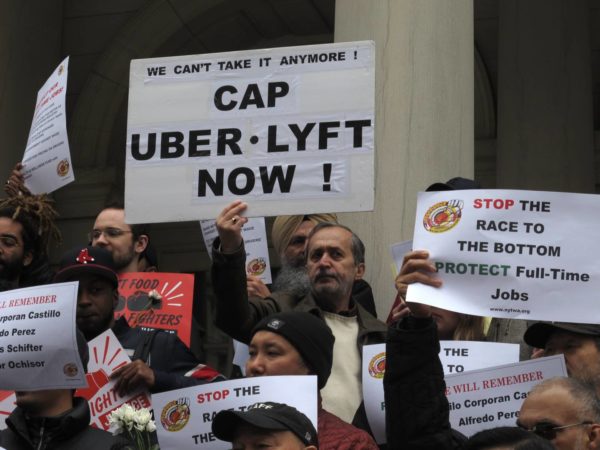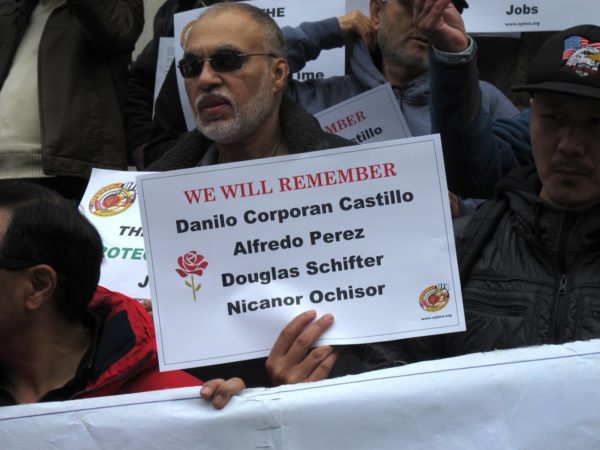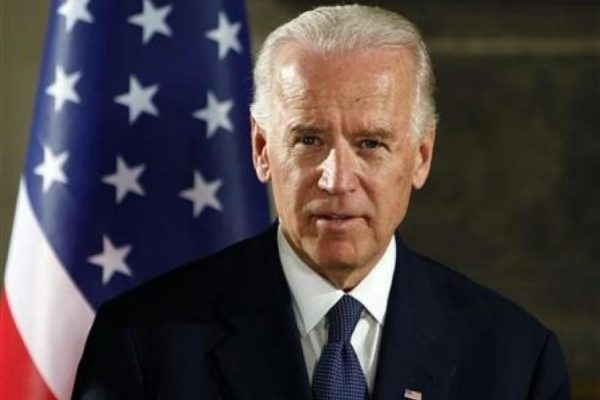NEW YORK, N.Y.—Holding white carnations and “Stop the Race to the Bottom” signs, about 150 taxi drivers rallied on the steps of City Hall March 28. They were mourning Nicanor Ochisor—the fourth financially strapped cabbie to commit suicide in the last four months—and demanding that the city do something to stop the industry’s decimation by the deluge of for-hire vehicles in the last few years.

“There’s not enough income day-to-day for drivers to make ends meet,” said Bhairavi Desai, executive director of the New York Taxi Workers Alliance. The city now has more than 100,000 for-hire vehicles on the street, roughly two-thirds of them from largely unregulated app-based services like Uber and Lyft. That, she said, has battered all sectors of the industry, from owner-operators, stuck paying $6,000 to $9,000 a month on medallions that have lost 80% of their value, to Uber drivers, more than half of whom make less than minimum wage after expenses.
“No driver is winning this race to the bottom,” Desai said. “Wall Street’s business model is destroying every driver across this sector. City Hall must act, and it must act now.”
Ochisor, a 64-year-old Romanian immigrant, committed suicide March 16. He and his wife, according to NYTWA, had burned through their life savings trying to make mortgage payments on their medallion despite both working 12-hour shifts in their cab. He was the fourth driver to kill himself since December, following black-car driver Douglas Schifter and Bronx livery drivers Danilo Corporan Castillo and Alfredo Perez.
“He was my best friend, a family friend for 20 years,” said Nicolae Hent, 61. “He couldn’t take it.”
The number of cabs on the street has nearly tripled since Uber arrived in New York, and that means “no one’s making any money,” Lee Come, 70, a yellow-cab driver since 1973, told LaborPress. “Three years ago, I could make money. It’s been going down and down.”
Ochisor, a 64-year-old Romanian immigrant, committed suicide March 16. He and his wife, according to NYTWA, had burned through their life savings trying to make mortgage payments on their medallion despite both working 12-hour shifts in their cab.
“My income has dropped at least 30 percent,” says Beresford Simmons, who started driving a yellow cab in 1972. “If I had to put my kids through college again, I couldn’t. I’m struggling to keep the little apartment I have in Queens.”
At age 71 and having recently had open-heart surgery, he wants to retire, but is still working 12- hours-a-day, seven-days-a-week, 8 a.m. to 8 p.m., and sometimes later. Cab drivers are not supposed to work more than 12 hours, “but I do it anyway,” he says.

The app-based companies are not fair competition, Desai told the crowd, because they’re not subject to the same regulations and expenses as other parts of the industry, such as drivers not having to get the hack licenses required for yellow and green-cab drivers. Uber and Lyft, she said, have more lobbyists than Walmart, Microsoft, and Amazon combined, and have used that to win exemptions from local taxi regulations in more than 40 states and from labor-law protections such as minimum wage in more than 25. In New York, NYTWA says, “the city allowed Uber, Lyft, and their cohorts to flood our streets with vehicles covered by zero regulation.”
“We pay millions to buy the medallion. They pay nothing,” says Lal Singh, 61, an immigrant from India’s Punjab province who has been driving a yellow cab for 30 years, and bought a medallion for $600,000 in 2000. He has to spend $10,000 a year on liability and workers’ compensation insurance, he adds, while “they pay nothing.”
Many medallion owners are filing for bankruptcy, he says, especially those who bought them when they reached a peak of $1.3 million in the early ‘10s. Their value has since dropped to below $200,000.
NYTWA is demanding that the city cap the number of for-hire vehicles; set the rate for yellow and green cabs as the minimum fare, so companies like Uber can’t undercut others; limit expenses charged to drivers, such as vehicle financing and lease rates; and protect drivers against wage theft. It’s planning to release a more definite proposal soon.
City Councilmember Stephen Levin (D-Brooklyn) who spoke at the rally, has introduced a bill that would sharply limit new for-hire vehicle licenses through August, 2019 pending a study of the impact of growth in the taxicab and for-hire vehicle industries. It has not yet drawn any cosponsors, however. Councilmember Ruben Diaz (D-Bronx) is planning to introduce a measure that would regulate app-based services more strictly.
The competition from app-based services, which have no investment in cars or garages and can flood the streets with “independent contractors” who paid for their cars themselves, isn’t cab drivers’ only gripe. The city’s new 25-miles-per-hour speed limit and red-light cameras mean they’re a lot more vulnerable to getting tickets. And if the state enacts Gov. Andrew Cuomo’s proposal for congestion pricing in Manhattan, those fees would come directly out of drivers’ pockets.

